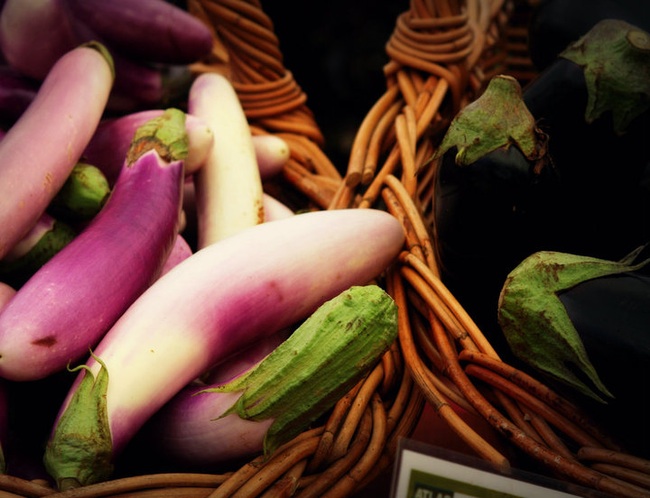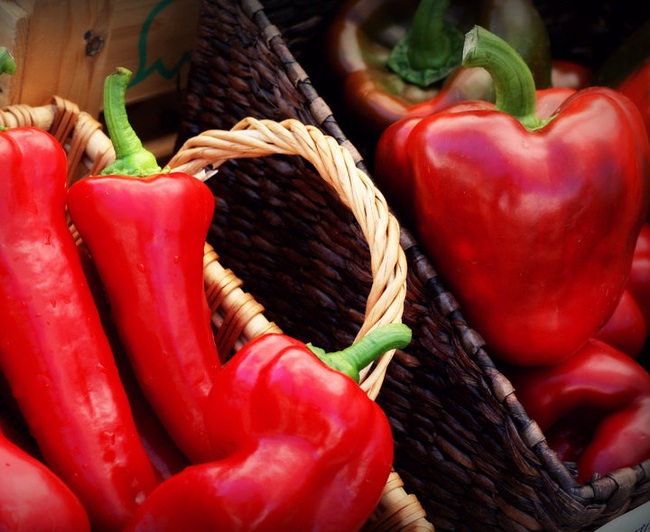Today, most grocery store produce departments are overflowing with displays of plump, colorful fruits and veggies. From bins of red peppers to cartons of sweet blueberries, many of us are fortunate to have a rainbow of produce at our fingertips year-round. However, a recent string of studies has brought the quality of our plant foods into serious question. Crops have shown a shocking decline in nutritional value over past years, leaving nutritionists, food policy advocates and environmentalists scrambling for answers. It may very well be that the recommendation of “five servings of fruits and veggies a day,” is no longer enough.
Where have the nutrients gone?
As early as the 1940’s, scientists began making foreboding observations about a rapid mineral dilution in the environment. Accumulating evidence from the last 70 years has strengthened these understandings, pointing to a rapid and irreparable decrease in the nutrient content of our soils. 1 In recent years, the widespread application of chemical fertilizers and over-farming techniques have worked to accelerate these changes at an alarming rate.
The use of cheaper, higher yield crop varieties has not helped the situation. Rather than planting region-specific heirloom crops, most large-scale commercial farmers have turned to more profitable hybrid varieties that have been intentionally bred for production convenience. These “monster” crops have been selected for their impressive size, sweetness and picture-perfect appearances. However, these changes have come at the expense of nutrient density. “When you select for yield, crops grow bigger and faster,” explains University of Texas biochemist, Dr. Donald Davis, “but they don’t necessarily have the ability to make or uptake nutrients at the same, faster rate.” 2

Add to this equation the time and distance that most produce items travel to get to store shelves, and things start to get even scarier. Long-haul trans-continental and international imports bring some fruits and vegetables to the shelves a full seven weeks after they have been picked. During this time the plants continue to respire, burning up beneficial antioxidants and polyphenols. By the time items make it to the shelves, they have almost completely lost the very disease-fighting compounds that we consume them for.
Consider the following studies:
- A 2004 article published in the Journal of the American College of Nutrition, compared nutritional differences in 43 garden crops between the years 1950 and 1999. Information from both dates was collected from U.S. Department of Agriculture archives, and carefully analyzed. Modern numbers slumped a shocking 6 to 38% behind historic averages. Of the 13 nutrients considered, six showed the most significant declines. These included: protein, calcium, phosphorous, iron, riboflavin (Vitamin B2) and vitamin C. The authors predicted that many other nutrients had likely been effected, but magnesium, zinc, vitamins B6, E and others were not sufficiently studied in 1950 to make official claims. 3
- One study conducted in England, uncovered a drop off of anywhere between 2 to 84% in the mineral content of foods between the years 1940-2002. This analysis went beyond crops to include animal foods with equally staggering results. Conventionally raised beef for example experienced a 38% drop in iron, an 84% decrease in copper and a 4% dip in magnesium content.4
- A similar study published in the British Food Journal demonstrated significant differences in vegetables grown in the 1930s and 1980s. For the 20 vegetables studied, the average calcium content had plummeted 19%; iron 22 %; and potassium 14%. 5
- According to expert Jo Robinson, wild plants contain many times more phytonutrients than modern varieties. Wild dandelions for example have seven times more nutrients than spinach. Purple potatoes from Peru have 28 times more beneficial anthocyanins than Russet Potatoes. Select native apples, which are no bigger than the size of a cherry, have 100-fold more phytonutrients than the common Golden Delicious. 6
- In 2006 the United Nations admitted to a new type of malnutrition, suggesting the the issue is not always food availability, but rather food quality. This new paradigm has been called "type B malnutrition" and looks at farming practices and issues with multiple micronutient depletion in communities around the globe. 7
- The Journal of the American Medical Association published a study warning that people can't get enough vitamins from diet alone, and that supplementation in all adults is recommended, if not necessary. 8
What can we do about it?
Currently, experts estimate that over three billion people are malnourished in micronutrients, including many living in developed nations. 9 Nutrient deficient crops are expected to contribute significantly to this statistic. As consumers, we can no longer wait to have our food supplies fixed for us. It is important that we take action to protect our own health, and that of our families, friends and the future generations.
While the above studies have uncovered some serious issues with crop production, this doesn’t mean we should give up eating plant foods altogether. After all, fruits and vegetables continue to be our only source of these unique phytonutrients. That's why it is so important for us to protect them. Here are some steps that will make a big difference:
Support Local Farms
I can’t say enough about getting to know your local farmers. Your foods will be fresh and seasonally appropriate to fit your body’s needs throughout the year. And, if you ever have any questions about production and harvesting methods, this is your opportunity to just ask! Check out the Farm to Consumer Legal Defense Fund for the latest policy, news and updates on all-things local farms.
Buy Heirloom Produce
They may be bumpy, wrinkled, and strangely-colored, but heirloom produce is usually higher in beneficial compounds than conventional counterparts. If you have a garden, planting heirloom seeds can also be a great way to have fresh produce right in your backyard. Generally these plants are better adapted to the local climate and soil conditions, making them heartier and more likely to produce over a longer period of time.
Opt for Organic Whenever Possible
There has been some controversy in recent months over whether or not organic is better. In my opinion this isn’t even a debate worth having. Save yourself from toxic chemical residue and save the environment from mineral-leaching fertilizers, and we will all win out.
Eat Plenty of Healthy Fats
That's right- fats like grass-fed butter, ghee, coconut oil and palm oil contain the co-factors and activators that prime our digestive systems for absorbing the most vitamins and minerals from foods. Be sure to add a dollop each time you prepare cooked veggies. If enjoying a fresh salad, dress with plenty of unrefined olive oil, argan oil and/or flax oil.
Supplement with Superfoods As Needed
It’s not always what we want to do, but sometimes supplementing is necessary. Be sure to use only supplements that are derived from concentrated whole foods, and avoid those that contain synthetic additives. Carefully sourced superfood supplements can go a long way in correcting dietary deficiencies and supporting health over the long term. Buy from companies you trust, who are doing their share to protect the environment and our food supply too!


